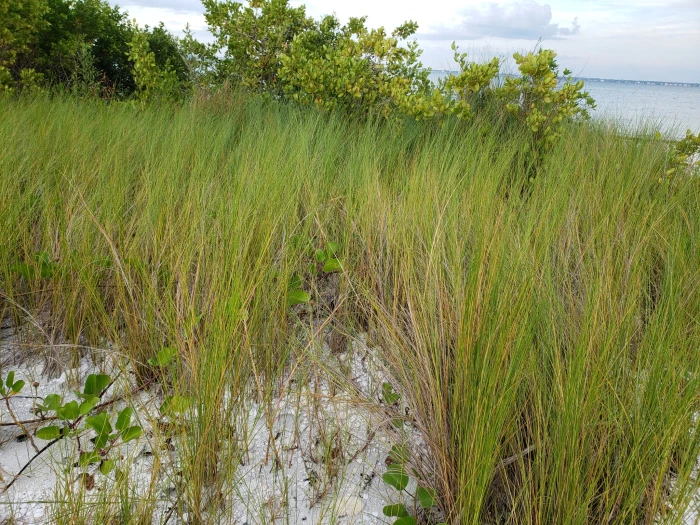Sand Cordgrass
(Sporobolus bakeri)
Sand Cordgrass (Sporobolus bakeri)
/
/

Arturo Santos
CC BY 4.0
Image By:
Arturo Santos
Recorded By:
Copyright:
CC BY 4.0
Copyright Notice:
Photo by: Arturo Santos | License Type: CC BY 4.0 | License URL: http://creativecommons.org/licenses/by/4.0/ | Rights Holder: Arturo Santos | Publisher: iNaturalist | Date Created: 2021-10-23T18:01:01-07:00 |

























Estimated Native Range
Climate Requirements
| • Precipitation | 47" - 64" |
| • High Temp. | 19°F - 93°F |
| • Low Temp. | -16°F - 63°F |
Summary
Sporobolus bakeri, commonly known as sand cordgrass or bunch cordgrass, is a perennial grass native to coastal dunes, salt marsh edges, and freshwater wetland margins in the southeastern United States, particularly Florida. It forms dense clumps or bunches that can spread up to 20 feet wide, with erect stems reaching up to 4 feet tall. The linear leaves are light green on the undersides and a darker green on top, and they may take on a brownish-green hue during the summer months. The inflorescences are subtle, with small, wind-pollinated flowers that appear in late summer to fall.
Sand cordgrass is valued for its ability to stabilize soil and control erosion, especially in coastal areas where it helps to build up dunes. It is also appreciated for its ornamental qualities in water gardens or as a naturalistic element in landscape design. In cultivation, Sporobolus bakeri prefers full sun to partial shade and can tolerate a range of soil types, provided they are moist or wet. It is highly adaptable to both saline and freshwater conditions, making it a versatile choice for challenging environments. While it is generally low-maintenance, it may require division every few years to manage its spread.CC BY-SA 4.0
Sand cordgrass is valued for its ability to stabilize soil and control erosion, especially in coastal areas where it helps to build up dunes. It is also appreciated for its ornamental qualities in water gardens or as a naturalistic element in landscape design. In cultivation, Sporobolus bakeri prefers full sun to partial shade and can tolerate a range of soil types, provided they are moist or wet. It is highly adaptable to both saline and freshwater conditions, making it a versatile choice for challenging environments. While it is generally low-maintenance, it may require division every few years to manage its spread.CC BY-SA 4.0
Plant Description
- Plant Type: Grass
- Height: 1-2 feet
- Width: 1-2 feet
- Growth Rate: Moderate
- Flower Color: N/A
- Flowering Season: Summer
- Leaf Retention: Evergreen
Growth Requirements
- Sun: Full Sun
- Water: Medium, High
- Drainage: Fast
Common Uses
Drought Tolerant, Low Maintenance, Street Planting
Natural Habitat
Coastal dunes, salt marsh edges, and freshwater wetland margins
Other Names
Common Names: Baker’s Sporobolus
Scientific Names: Sporobolus bakeri, Spartina bakeri, Spartina juncea var. bakeri
GBIF Accepted Name: Sporobolus bakeri